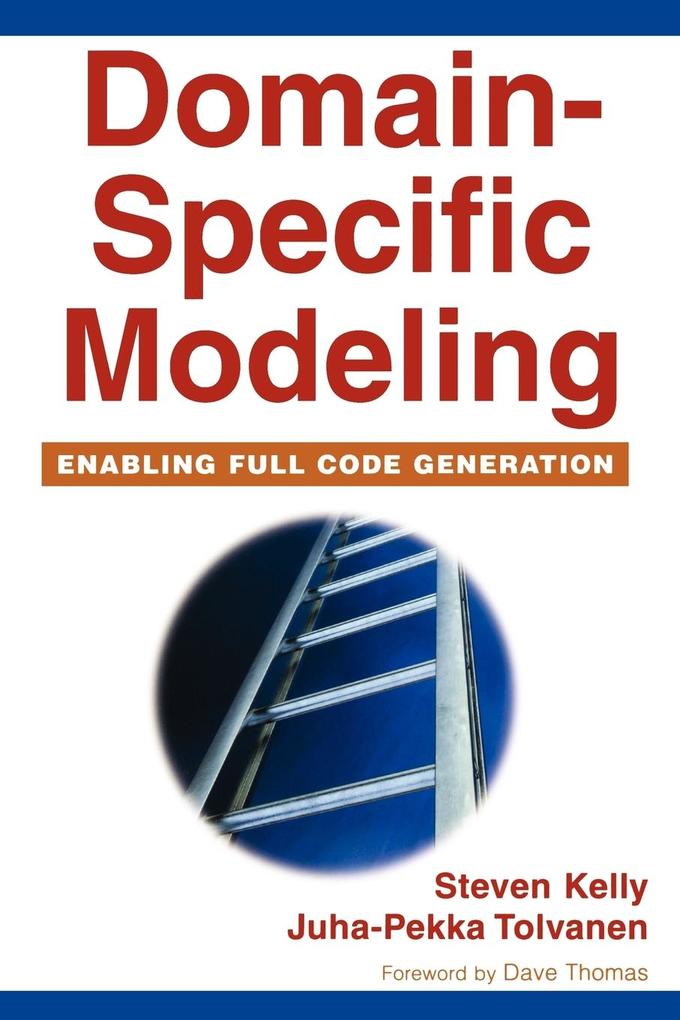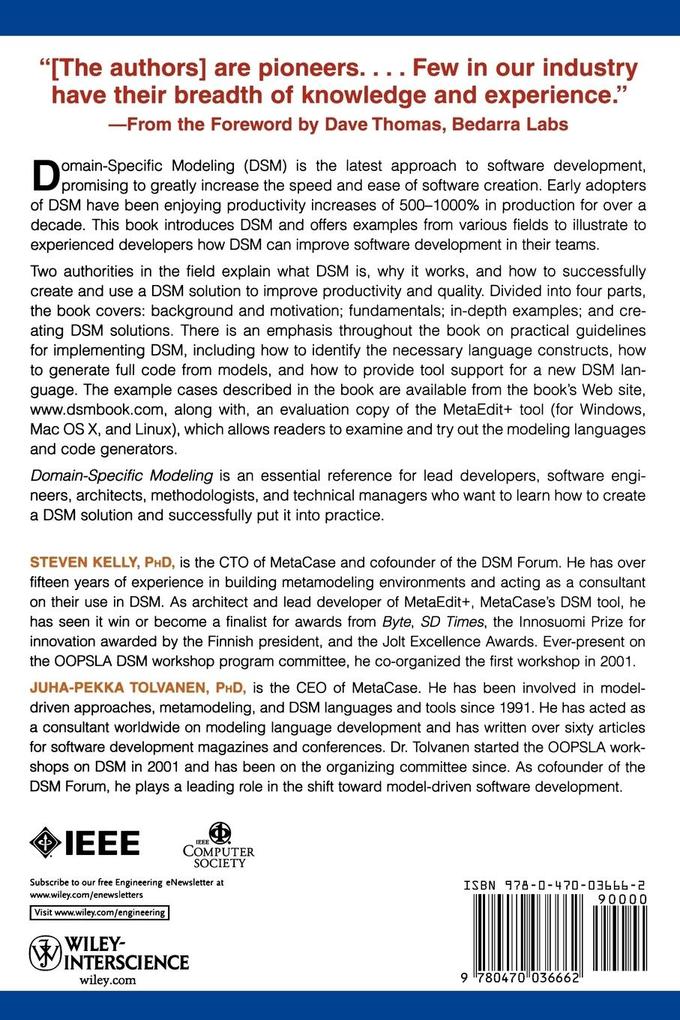Domain Specific Modeling illustrates examples from various fields of software product development. The main part of the book addresses the guidelines for implementing DSM: how to identify the necessary language constructs, what options are available for code generation; and what tools are available to provide tool support for a new DSM language.
Domain-Specific Modeling (DSM) is the latest approach to software development, promising to greatly increase the speed and ease of software creation. Two authorities in the field explain what DSM is, why it works, and how to use it to improve productivity and quality. Divided into four parts, the book covers: background and motivation; fundamentals; in-depth examples; and creating DSM solutions. The book is complemented iwth examples from various fields to illustrate to experienced developers how DSM can improve software development in their teams.
Inhaltsverzeichnis
Foreword. Preface.
PART 1: BACKGROUND AND MOTIVATION.
1. Introduction.
1. 1 Seeking the better level of abstraction.
1. 2 Code-driven and model-driven development.
1. 3 An example: modeling with a general-purpose language and with a domain-specific language.
1. 4 What is DSM?
1. 5 When to use DSM?
1. 6 Summary.
2. Business value.
2. 1 Productivity.
2. 2 Quality.
2. 3 Leverage expertise.
2. 4 The economics of DSM.
2. 5 Summary.
PART 2: FUNDAMENTALS.
3. DSM defined.
3. 1 DSM characteristics.
3. 2 Implications of DSM for users.
3. 3 Difference to other modeling approaches.
3. 4 Tooling for DSM.
3. 5 Summary.
4. Architecture of DSM.
4. 1 Introduction.
4. 2 Language.
4. 3 Models.
4. 4 Code generator.
4. 5 Domain framework and target environment.
4. 6 DSM organization and process.
4. 7 Summary.
PART 3: DSM EXAMPLES.
5. IP telephony and call processing.
5. 1 Introduction and objectives.
5. 2 Development process.
5. 3 Language for modeling call processing services.
5. 4 Modeling IP telephony service.
5. 5 Generator for XML.
5. 6 Framework support.
5. 7 Main results.
5. 8 Summary.
6. Insurance products.
6. 1 Introduction and objectives.
6. 2 Development process.
6. 3 Language for modeling insurances.
6. 4 Modeling insurance products.
6. 5 Generator for Java.
6. 6 Framework support.
6. 7 Main results.
6. 8 Summary.
7. Home Automation.
7. 1 Introduction and objectives.
7. 2 Development process.
7. 3 Home automation modeling language.
7. 4 Home automation modeling language in use.
7. 5 Generator.
7. 6 Main results.
7. 7 Summary.
8. Mobile phone applications using Python framework.
8. 1 Introduction and objectives.
8. 2 Development process.
8. 3 Language for application modeling.
8. 4 Modeling phone applications.
8. 5 Generator for Python.
8. 6 Framework support.
8. 7 Main results.
8. 8 Extending the solution to native S60 C++.
8. 9 Summary.
9. Digital Wristwatch.
9. 1 Introduction and Objectives.
9. 2 Development Process.
9. 3 Modeling Language.
9. 4 Models.
9. 5 Code Generation for Watch Models.
9. 6 The Domain Framework.
9. 7 Main Results.
9. 8 Summary.
PART 4: CREATING DSM SOLUTIONS.
10 DSM language definition.
10. 1 Introduction and objectives.
10. 2 Identifying and defining modeling concepts.
10. 3 Formalizing languages with metamodeling.
10. 4 Defining language rules.
10. 5 Integrating multiple languages.
10. 6 Notation for the language.
10. 7 Testing the languages.
10. 8 Maintaining the languages.
10. 9 Summary.
11. Generator definition.
11. 1 "Here's one I made earlier".
11. 2 Types of generator facilities.
11. 3 Generator output patterns.
11. 4 Generator structure.
11. 5 Process.
11. 6 Summary.
12. Domain Framework.
12. 1 Removing duplication from generated code.
12. 2 Hiding platform details.
12. 3 Providing an interface for the generator.
12. 4 Summary.
13. DSM definition process.
13. 1 Choosing among possible candidate domains.
13. 2 Organizing for DSM.
13. 3 Proof of concept.
13. 4 Defining the DSM solution.
13. 5 Pilot project.
13. 6 DSM deployment.
13. 7 DSM as a continuous process in the real world.
13. 8 Summary.
14. Tools for DSM.
14. 1 Different approaches to building tool support.
14. 2 A Brief History of Tools.
14. 3 What is needed in a DSM environment.
14. 4 Current tools.
14. 5 Summary.
15. DSM in use.
15. 1 Model reuse.
15. 2 Model sharing and splitting.
15. 3 Model versioning.
15. 4 Summary.
16. Conclusion.
16. 1 No sweat shops--But no Fritz Lang's Metropolis either.
16. 2 The onward march of DSM.
Appendix A: Metamodeling Language.
References.
Index.














